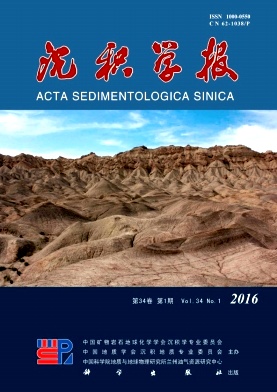Depositional Evolution and Paleoclimate Changes Since Late Pleistocene in Guangrao Area, Shandong Province
doi: 10.14027/j.cnki.cjxb.2016.01.007
- Received Date: 2014-06-20
- Rev Recd Date: 2014-11-13
- Publish Date: 2016-02-10
-
Key words:
- Guangrao area /
- Late Pleistocene /
- transgression and loess /
- depositional evolution /
- paleoclimate changes
Abstract: Influenced by transgressions, the shallow strata of Quaternary has a complicated sedimentary evolution in Guangrao area, the inland of Southwest Bohai Sea since Late Pleistocene. Below the surface of 30 meters, it mainly deposits loess in the south of the area, while in the north of the area, it mainly deposits two marine layers, which were respectively named the first transgression layer and the second transgression layer. The first transgression layer is Huanghua transgression layer of 10~4 ka B.P., while the second transgression layer is Xianxian transgression layer of 40~28 ka B.P. According to 4 drilling coring Wells and 88 static sounding wells studied the transgression evolution and loess of the area by using modern test methods (particle size analysis, heavy mineral analysis, 14C dating, geochemical tests) and stratigraphic correlation. The loess layer deposited in late Pleistocene, and can be divided into Dazhan formation and Yanglanhe formation in the south of area on the depth boundary of 17 meters. It had two transgression events (Huanghua transgression and Xianxian transgression) since late Pleistocene and came to the area in the maximum transgression time. Because of the erosion and modification of the two transgressive events, it had formed the transgressive evolution model of "transgression overlap the loess". According to the paleoclimate change which math to transgression and loess deposition evolution, climate change of the area can be divided into six periods since Late Pleistocene, including cold dry climate, warm humid climate, cold dry but slants cool climate, warm climate, moist climate and modern climate. Different type of climate corresponds to different feature of sedimentary evolution.
| Citation: | YANG JianPing, PANG XiaoLin, WANG HaiFeng, JIA JunTao, LIU Ling. Depositional Evolution and Paleoclimate Changes Since Late Pleistocene in Guangrao Area, Shandong Province[J]. Acta Sedimentologica Sinica, 2016, 34(1): 79-89. doi: 10.14027/j.cnki.cjxb.2016.01.007 |






 DownLoad:
DownLoad: